Table of Contents
There are over 26 million ecommerce sites worldwide. Most will never be found.
Why? Because they focus on beautiful designs, flashy product pages, and “limited time” offers—while ignoring the backbone of digital discovery: Search Engine Optimization (SEO).
If you’re building or scaling an ecommerce brand in 2025, SEO is no longer just a visibility lever—it’s a conversion engine. From your category taxonomy to your structured data and site speed, every line of code and keyword matters.
This is not another beginner’s guide. This is your definitive 2025 ecommerce SEO checklist—designed to boost your rankings and your revenue.
Why Ecommerce SEO Is a Non-Negotiable in 2025
Google’s algorithm has evolved. Again.
In 2025, we’re not just talking about keywords and backlinks. Google now focuses on semantic intent, core web vitals, indexing hygiene, and commercial query satisfaction. Add to that the rise of AI-generated content and Google’s new Search Generative Experience (SGE), and your ecommerce brand needs technical excellence and content depth to stand out.
Let’s decode what that means for your brand.
Key 2025 SEO Trends That Will Impact Ecommerce
1. Google SGE (Search Generative Experience) Prioritizes Expert Context
SGE is changing how product discovery works. Instead of just blue links, users see AI-generated summaries, comparisons, and product suggestions directly in the search result.
Implication: You need structured, high-authority product data + rich media + review content to show up in these AI snapshots.
2. First-Party Data and E-E-A-T Go Hand-in-Hand
Google wants to rank pages that demonstrate Experience, Expertise, Authority, and Trustworthiness (E-E-A-T)—and this now applies to ecommerce brands too.
✅ Verified reviews
✅ Author-backed buying guides
✅ Transparent shipping, return, and support policies
These are not optional anymore. They’re ranking signals.
3. Core Web Vitals 2.0: Interaction to Next Paint (INP) Is Live
INP replaces First Input Delay (FID) in Google’s Page Experience update. Your site needs to load fast and respond faster.
“Your PDP might be gorgeous, but if it takes 5 seconds to render, you’re out of the top 10.”
4. Category and Product Pages Must Do SEO Heavy Lifting
Blog-driven traffic is no longer enough. Your money pages—category and product pages—must rank. That means technical SEO, semantic markup, rich media, and conversion design all-in-one.
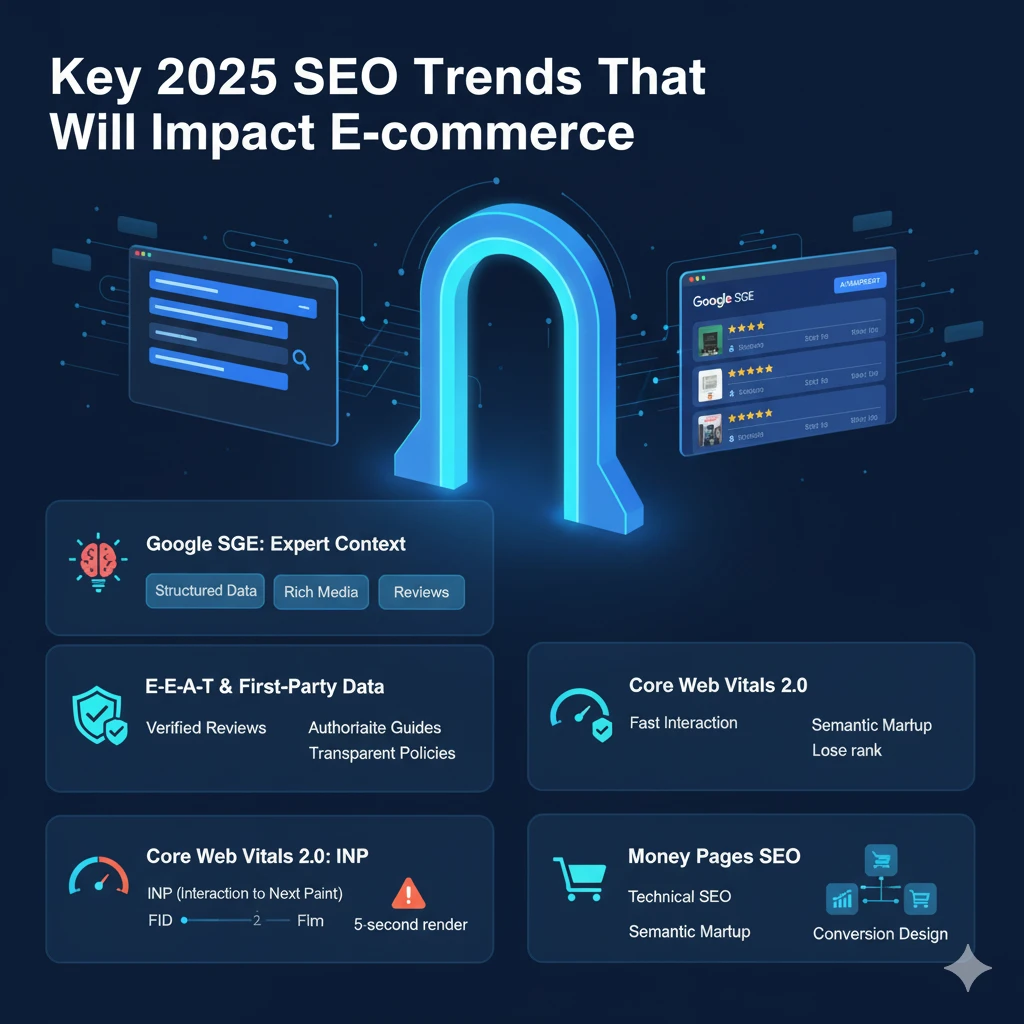
The Ultimate 2025 Ecommerce SEO Checklist (with Deep Dives)
Let’s break it down by components—Category Pages, Product Pages, and Technical SEO Backbone.
Category Page Seo Checklist (Where Most Brands Fail)
Your category page is not just a collection of products. It’s a mini homepage for that product type. It needs to rank for commercial-intent queries like “Best Running Shoes for Flat Feet” or “Affordable Vitamin C Serums.”
✅ 1. Keyword Targeting: Beyond Short-Tails
- Use tools like Ahrefs, SEMRush, or AlsoAsked to find:
- Long-tail modifiers (“under ₹1000”, “2025”, “with arch support”)
- Semantic variants (e.g., “moisturizer” = “cream”, “hydrator”, “lotion”)
- Question-based terms (“what to use for oily skin”)
- Long-tail modifiers (“under ₹1000”, “2025”, “with arch support”)
✅ 2. Unique Intro Content (100–300 Words)
- Add a keyword-optimized intro above the fold.
- Use H1 and H2s for structure.
- Don’t keyword stuff—focus on helping the user choose.
📌 Pro Tip: Use schema-based Q&As below filters to answer user queries on the same page.
✅ 3. Faceted Navigation with SEO Control
- Allow filter combinations, but noindex thin combinations (e.g., red+blue+pink).
- Canonicalize primary versions of filtered pages.
- Use breadcrumbs with proper schema for hierarchy clarity.
✅ 4. Use Structured Data
- Use ItemList schema to describe products on the page.
- Embed review schema, aggregate ratings, and availability in product cards.
- Add FAQPage schema if you include FAQs.
✅ 5. Mobile UX & Speed
- Filters must be tappable and sticky on scroll.
- Lazy load images but preload first 2 rows of products.
Test on Lighthouse, target INP < 200ms.
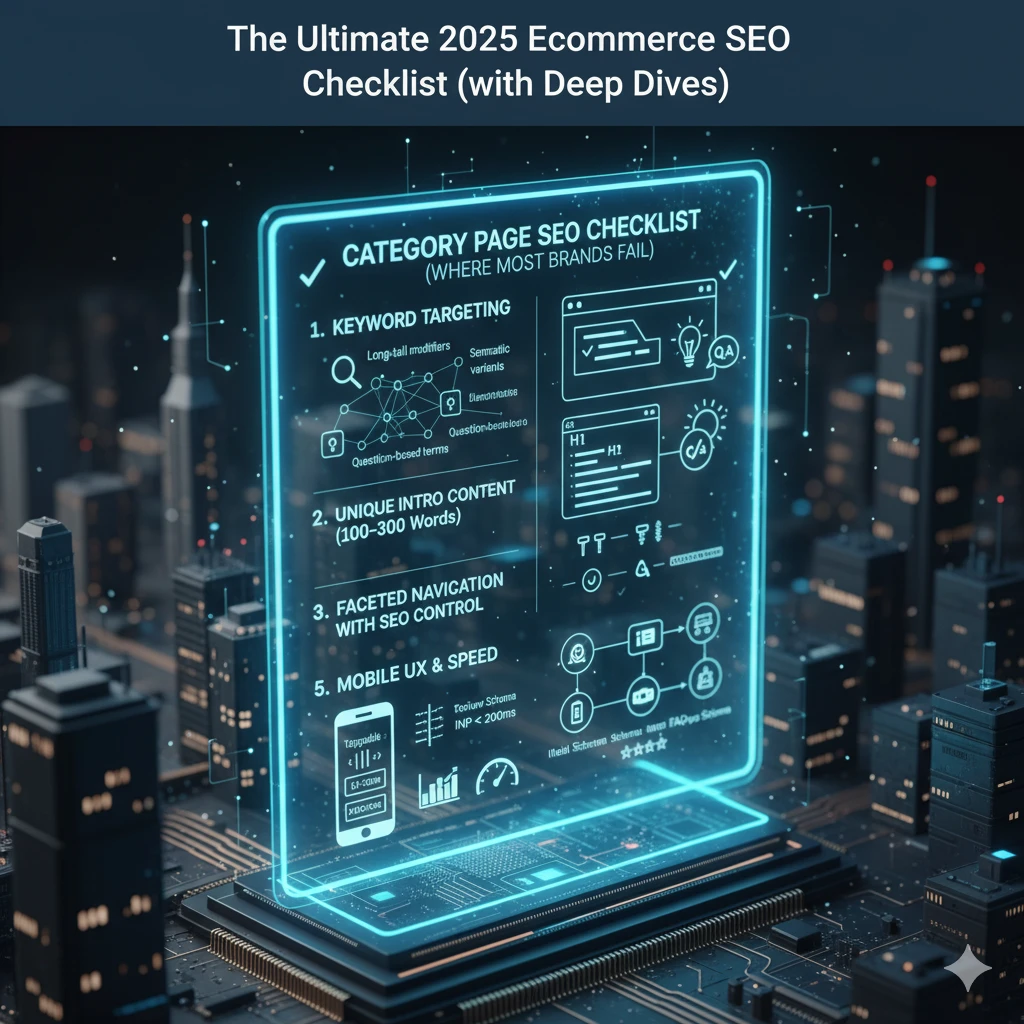
Product Page Seo Checklist (Your Actual Money Pages)
These are your sales reps. Optimizing them isn’t just about ranking—it’s about convincing.
✅ 1. SEO-Optimized Product Titles
- Format: Brand + Product Type + Key Feature + Modifier
- E.g., The Brisk Vitamin C Serum – 10% Pure with Hyaluronic Acid
- E.g., The Brisk Vitamin C Serum – 10% Pure with Hyaluronic Acid
- Ensure:
- H1 = Product Title
- Title tag is ≤ 60 characters
- Meta description is compelling + keyword-rich (but human)
- H1 = Product Title
✅ 2. Unique Product Descriptions (200–500 words)
- Avoid manufacturer copy.
- Talk benefits over features.
- Include keywords organically in first 100 words.
Bonus: Use customer testimonial quotes in between to increase trust and add fresh content.
✅ 3. Technical Schema (Must-Have)
- Product schema
- AggregateRating, Offer, Review
- BreadcrumbList
- VideoObject (if you have how-to or demo videos)
Use Google’s Rich Results Test to validate.
✅ 4. Product Images and Videos
- Use WebP format for speed.
- Add descriptive ALT tags: “Vitamin C face serum in amber glass bottle”
- Include product demo videos with a transcript for SEO value.
✅ 5. Reviews, UGC, and Q&A Section
- Display verified reviews with stars and date
- Allow user-generated questions + your answers
- Add FAQ schema for these answers
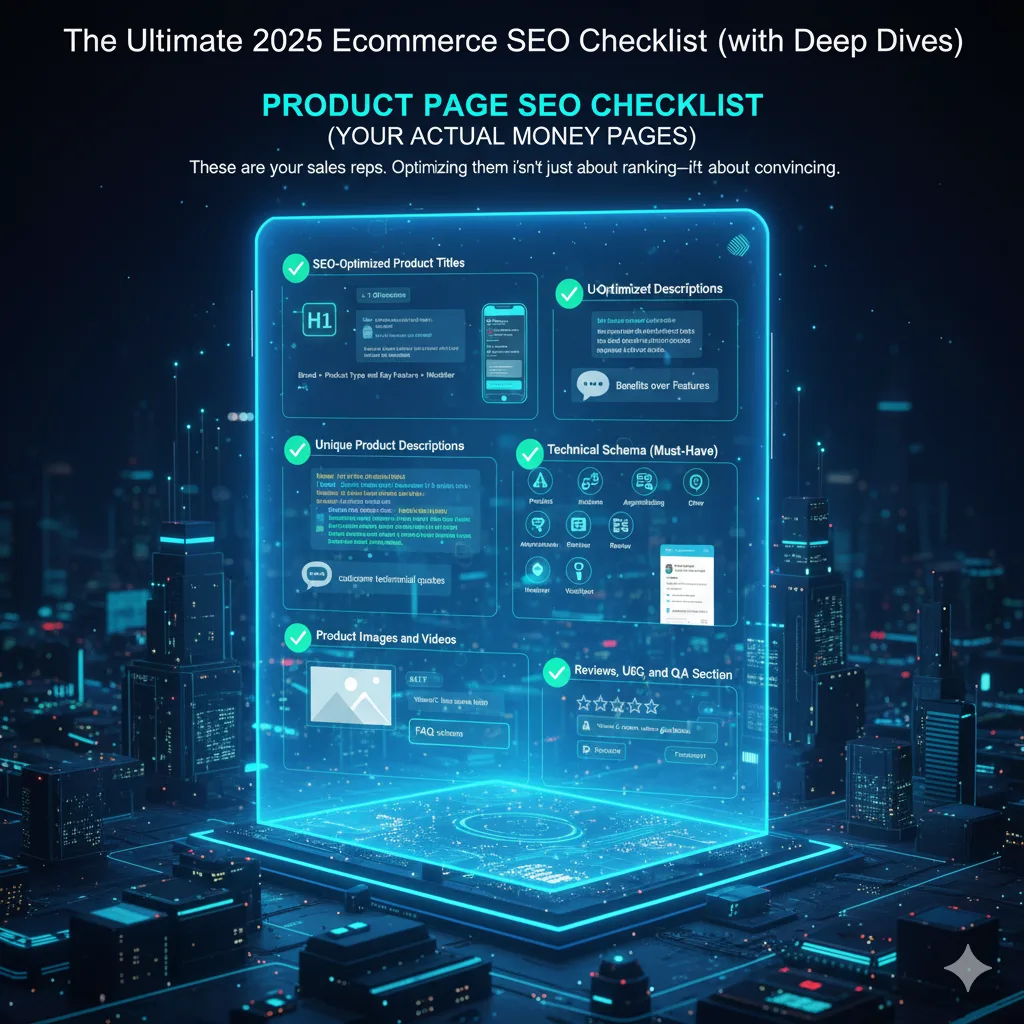
TECHNICAL SEO CHECKLIST FOR 2025 (The Backbone)
Now that your key pages are optimized, let’s talk indexing, crawl budget, and site health.
✅ 1. Site Architecture
- Flat structure: Every product within 3 clicks from homepage
- Logical URL hierarchy:
- /skincare/vitamin-c/brightening-serum/
- /skincare/vitamin-c/brightening-serum/
✅ 2. Internal Linking
- From blog to categories
- From categories to related products
- Use descriptive anchor texts:
- ❌ “Click here”
- ✅ “Explore our best-selling serums for dry skin”
- ❌ “Click here”
✅ 3. Page Speed & Core Web Vitals
- INP: < 200ms
- LCP: < 2.5s
- CLS: < 0.1
Use tools like:
- PageSpeed Insights
- Web.dev Measure
- [Chrome DevTools → Lighthouse Audit]
✅ 4. XML Sitemap & Robots.txt
- Dynamic sitemap: auto-update with new products
- Robots.txt: allow crawl but disallow search results pages
✅ 5. Canonical Tags
- Use canonical URLs for filtered and variant pages
- Avoid duplicate content across PDPs with only slight differences (e.g., color)
✅ 6. Indexing Hygiene
- Regularly audit index coverage in GSC
- Noindex:
- Internal search pages
- Empty categories
- Filter combinations that don’t add value
- Internal search pages
✅ 7. Mobile-First Optimization
- Test on real devices, not just simulators
- Clickable elements must have 48px tap targets
- Ensure mobile checkout is SEO-friendly (fast, secure, smooth)
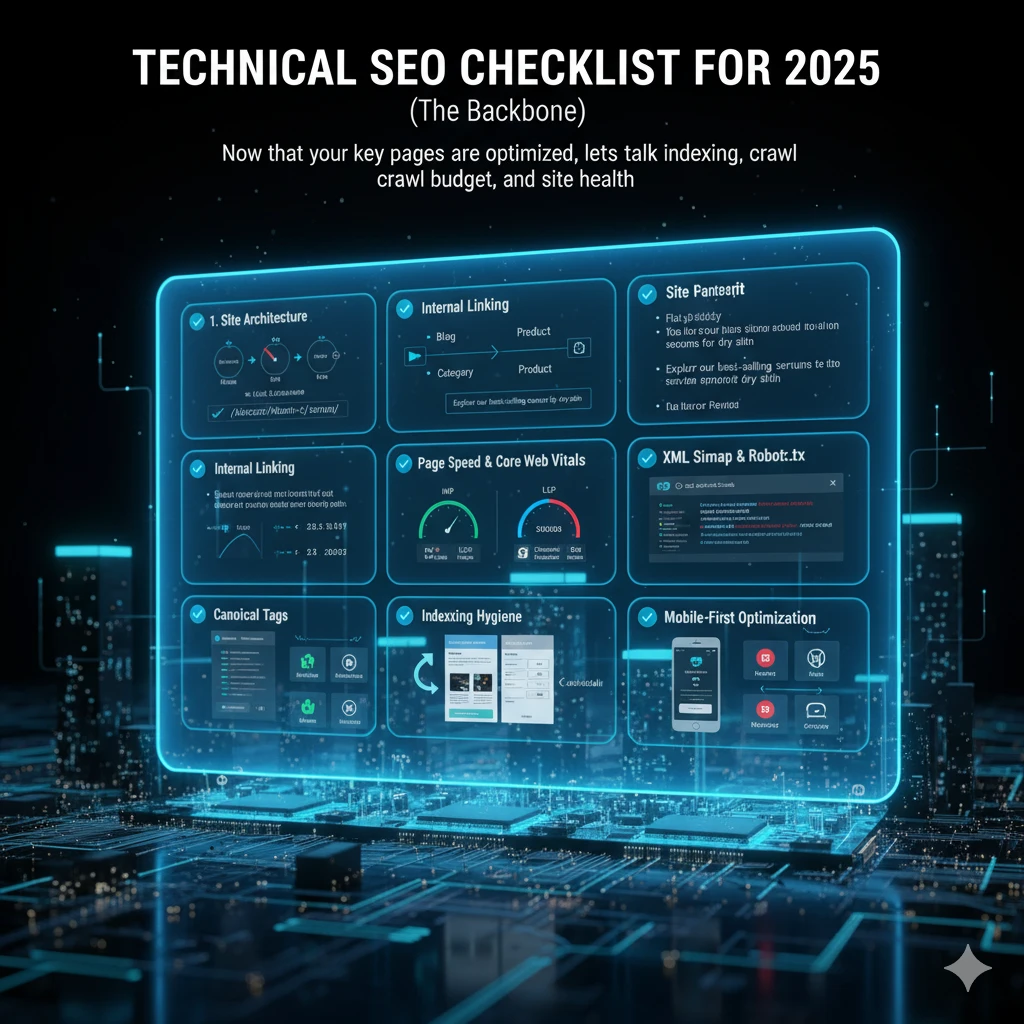
BONUS: Don’t Forget These Conversion-Boosting SEO Tactics
Even the best-ranked product page won’t convert if it feels untrustworthy or incomplete.
🧾 Add Trust Seals & Return Info Above Fold
- Display “Free Returns”, “Ships in 24 Hours”, “Secure Checkout” as visible trust badges.
📞 Add Schema for Contact & Support
- Add LocalBusiness schema if you have physical stores.
- Include ContactPoint schema with support email or WhatsApp.
🔁 Run a Content Loop for SEO + CRO
- Write comparison blogs (e.g., “Top 5 Vitamin C Serums in India – 2025”)
- Internally link back to your PDPs
- Repurpose for Google Discover and Pinterest
Real Ecommerce Brand SEO Case Study (2024 Data)
🎯 Client: CleanSkin Co. (D2C Skincare Brand)
📈 Goal: Rank #1–#3 for “best vitamin c serum India” and reduce reliance on paid ads
Strategy Deployed
- 1000-word SEO-optimized category intro with Q&A schema
- Product page rewrites with review schema + videos
- Restructured URL taxonomy with internal links from blogs
- Removed 37 low-quality indexed filter pages
Results (6 Months)
| Metric | Before | After |
| Organic Traffic | 12K/month | 38K/month |
| PDP Ranking (Top 3) | 3 products | 17 products |
| Bounce Rate | 64% | 42% |
| Conversion Rate | 1.8% | 3.9% |
Final Thoughts: SEO Is Your Best Salesperson—Train It Right
In ecommerce, every click costs. Whether you’re a bootstrapped D2C founder or managing a VC-funded scaleup, SEO is the only marketing channel that builds value over time without burning cash.
But the bar is high in 2025:
- You can’t keyword-stuff your way to the top.
- You can’t neglect PDP UX and expect conversions.
- You can’t treat SEO and CRO as separate functions.
They must work in tandem.
Want The Brisk Team to Audit Your Ecommerce SEO?
We decode technical issues, rewrite product pages, restructure your funnel, and turn your site into a high-conversion machine.
📩 Let’s chat about your goals and audit your site for free.
Loved this checklist?
Subscribe to our Technical Mastery series for weekly breakdowns on ecommerce, SEO, and performance engineering.
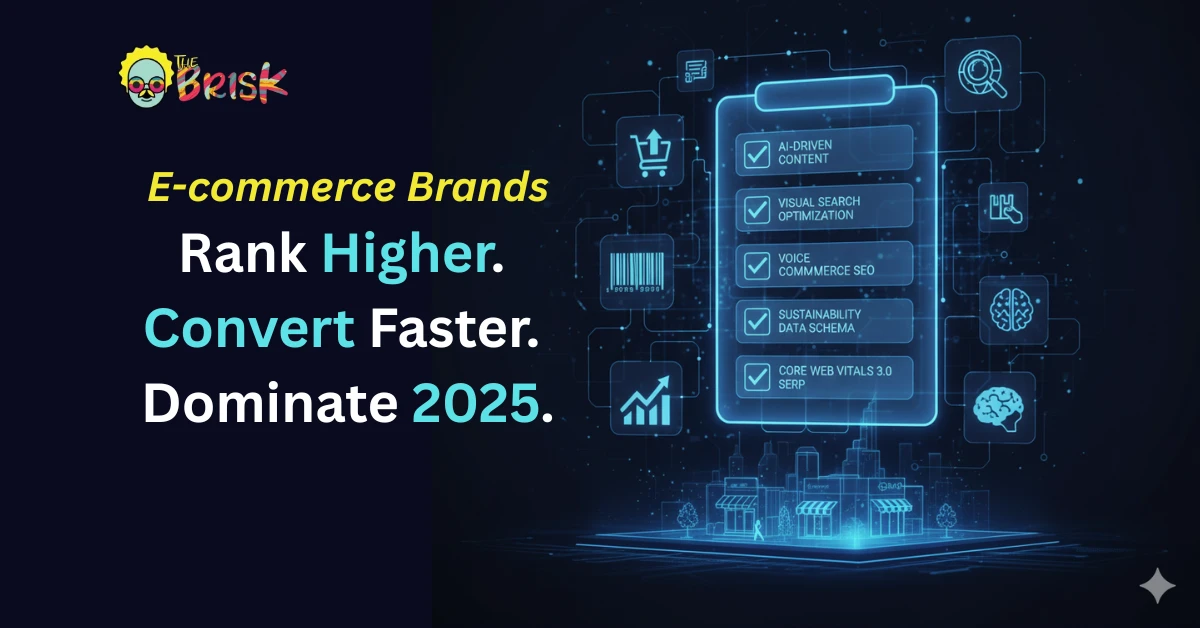

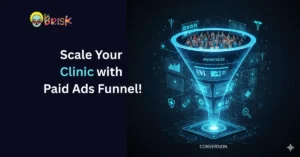
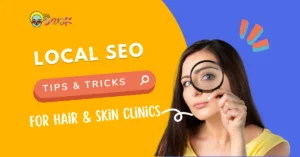
No Comments